
Mario Radovich
Staff Senior Researcher (Primo Ricercatore)
INAF - Osservatorio Astronomico di Padova
Vicolo Osservatorio 5 - 35122 Padova
Email: mario.radovich@inaf.it
Phone: +39 049 8293524
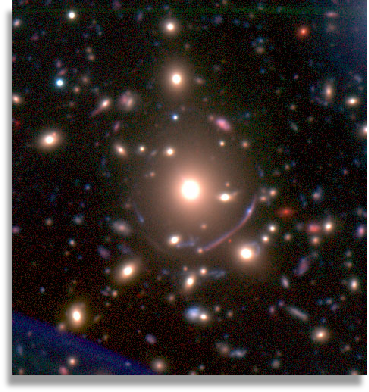
Gravitational lensing in the massive cluster Abell 383, observed with the SUBARU telescope (data reduced with the VSTTube pipeline)
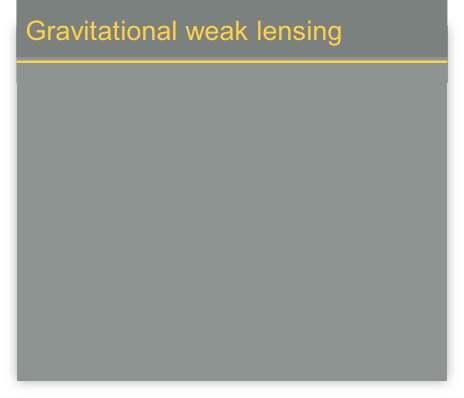
Weak lensing is a powerful tool for understanding the underlying mass distribution of the universe, most of which is in the form of dark matter which is only observable in terms of its gravitational effects. Massive objects bend the light emitted by objects such as galaxies that lie behind them, acting as a lens, which in the case of strong lenses can significantly magnify distant galaxies and distort them so that they appear as arcs. In the case of weak lensing, the effects are more subtle, apparent only as a coherent distortion pattern in the light distribution of distant galaxies. By measuring the shapes of galaxies very accurately, and summing over many galaxies to account for the natural variation in the shapes of galaxies, these coherent distortion patterns can be measured, and used to deduce the underlying mass distribution (mostly from dark matter) that causes them. Since ten years, different telescopes (e.g. the 8m LBT and SUBARU telescopes, the 3.5m CFHT, and the ESO 2.6m VST) are able to provide wide-field images enabling us to analyze this subtle effect and explore the properties of dark matter in the Universe. In the near future, the Vera Rubin Observatory (aka LSST) and the EUCLID space telescope will allow to push this analysis to lower masses and higher accuracies.
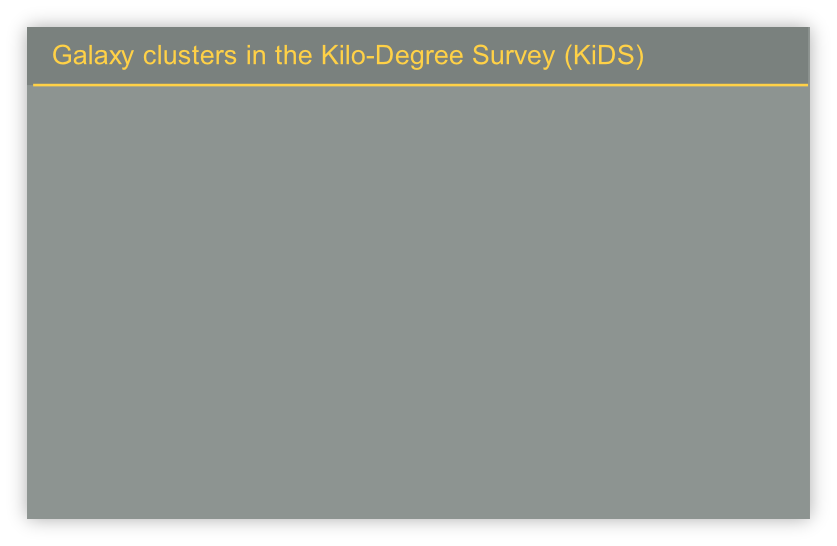
In the last few years, three large astronomical surveys were conducted specifically for weak lensing: the Canada-France-Hawaii Telescope Legacy Survey (CFHTLS, completed), the VLT-Survey Telescope Kilo-degree Survey (VST-KIDS, PI: K. Kuijken), and the Panoramic Survey Telescope and Rapid Response System (Pan-STARRS; PS1). In particular, INAF (OAPD and OACN) is involved within the VST-KIDS survey, a 1500 square degree public imaging survey in the Sloan colours (u',g',r',i',z') in two patches: an equatorial strip on the North Galactic Cap; and a patch near the South Galactic Pole. The primary goals of the weak lensing analyses in KIDS are two-fold: firstly to explore the properties and evolution of dark matter and dark energy; and secondly to directly probe the dark matter halos in which galaxies reside. KIDS observations, started in Fall 2011, were completed in 2019. The same areas covered by KIDS are also the target of the VIKING survey done with the VISTA telescope in the near-infrared JYHK bands (look here for more details on KIDS, VIKINGS and ancillary surveys). The AMICO code, developed by L. Moscardini, F. Bellagamaba and M. Roncarelli (Univ. Bologna) and M. Maturi (Univ. Heidelberg), was applied to the KiDS data to extract a catalog of galaxy clusters at redshifts 0 < z <0.8; masses derived by weak lensing were used to calibrate the AMICO richness vs. optical mass. In a series of papers, we explored the properties (luminosity function, blue/red galaxy fraction) at different redshifts of the galaxy clusters detected in the KiDS-DR3 release (450 sq. Deg.); the distribution of the clusters in mass/age is also being used to constrain cosmological parameters. We are now working on a cluster catalog based on the KiDS-DR4 (1000 sq. Deg.)
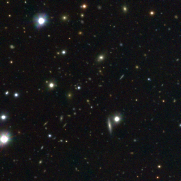
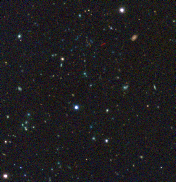
Galaxy clusters in KiDS at z=0.4 (left) and z=0.8 (right)
The KiDS-galaxy cluster team:
M. Radovich (INAF-OAPD)
E. Puddu (INAF-OACN)
S. Bardelli, C. Giocoli, M. Sereno (INAF-OAS)
L. Moscardini, F. Marulli, G. Lesci (Univ. Bologna)
M. Maturi (Univ. Heidelberg)
See here the AMICO-KiDS papers in the ADS